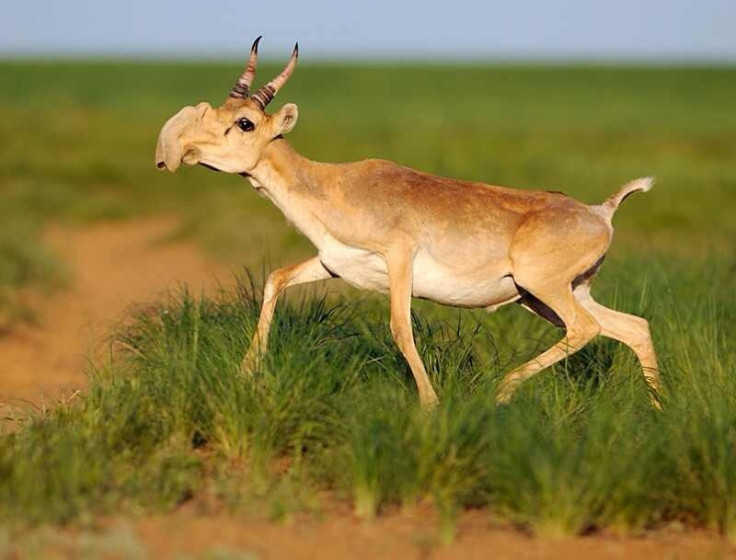Saiga antelope mass death mystery: Why did half the population die in two weeks?

Half of the entire saiga antelope population died within two weeks earlier this year, and scientists still do not know why. In May and June, more than 130,000 antelopes (around half of the entire population of the endangered species) died, with 60,000 dropping dead in just four days.
Six months on and experts are still no closer to explaining why the mass deaths took place – there was no evidence of trauma, soil samples have not shown toxicity (activists had said fuel from Russian rockets had poisoned them) and scientists say the deaths took place too fast for it to be the result of a transmissible disease.
So what killed them? Saiga antelopes mostly reside in the plains of Kazakhstan – where all of the deaths took place. Before May, the population was estimated to be between 250,000 and 320,000, with the species threatened by habitat loss and illegal hunting. However, the dead saiga showed no sign of malnutrition our wounds.
Currently, the most prevalent theory is that the deaths were the result the bacteria pasteurella, which is found in saiga throats and is normally dormant. However, Richard Kock from the Royal Veterinary College at the University of London told the Guardian that something might have triggered the bacteria to produce toxins that attacked the animals' organs – causing death within hours.
What triggered the bacteria to switch, Kock explained, could have been a 20C drop in temperature in just 24 after the saiga had lost their protective winter coats. This does not fully solve the mystery though as similar temperature shifts have taken place in the past, and not led to mass deaths.
"It could all be down to timing. If you get your ducks all lined up in a row, something happens. Whatever it is, it has to be something that would affect all of them," he said, adding it is extremely unusual to have a 100% mortality rate. "It's bizarre, extremely rare and doesn't make a lot of sense. Usually in a system, a proportion die and get sick."
Speaking to the New York Times, he said there is a risk of the species disappearing: "It's not going to be something the species can survive. If there are weather triggers that are broad enough, you could actually have extinction in one year."
Stephane Ostrowski, from the Wildlife Conservation Society, reiterated Kock's concern, telling CBS News the deaths show the danger of letting saiga decline to such an extent in the first place: "Mortality events that once had limited impact on the large global population now have the potential to drive the few remaining animals quickly to extinction."
© Copyright IBTimes 2025. All rights reserved.






















